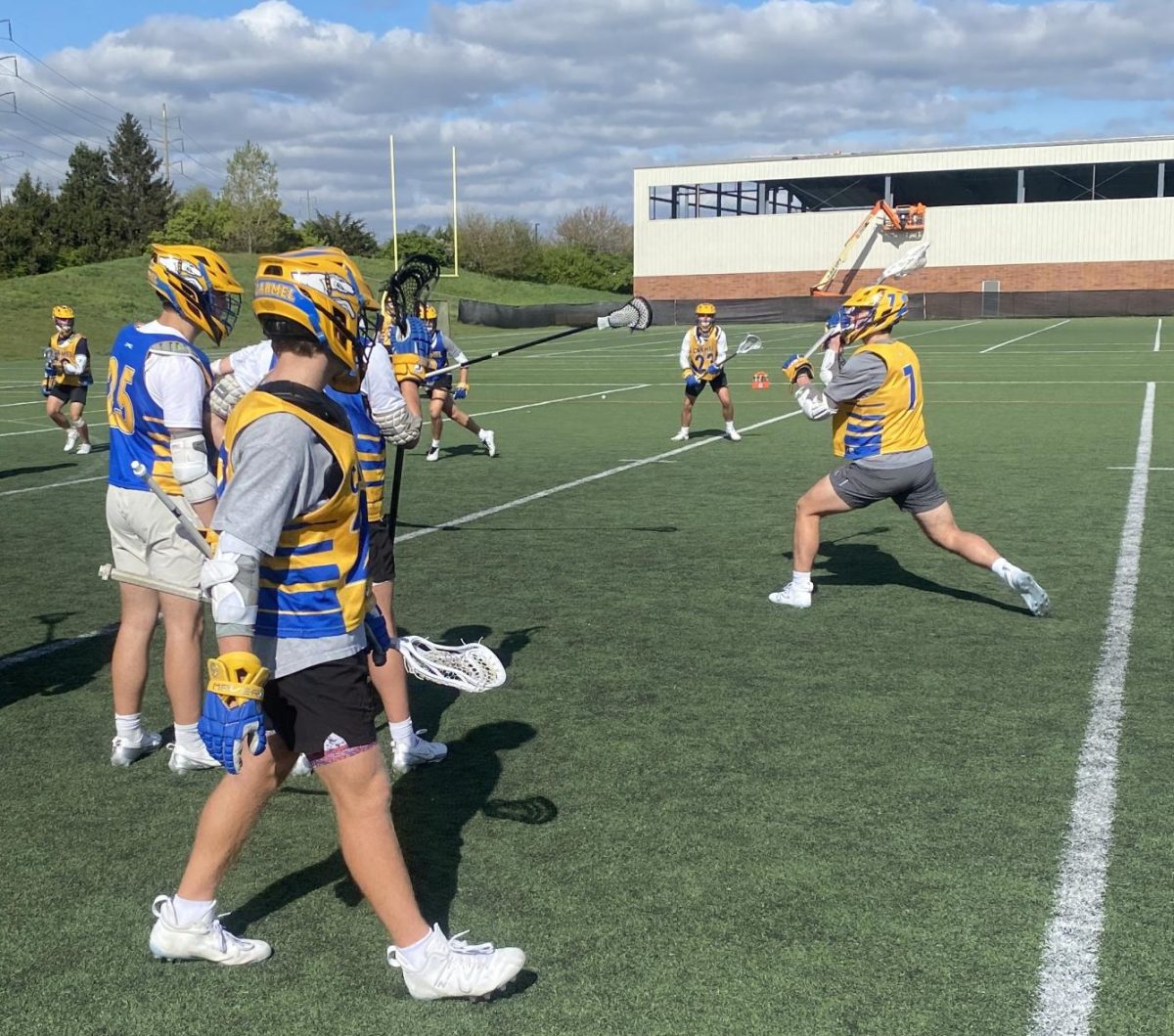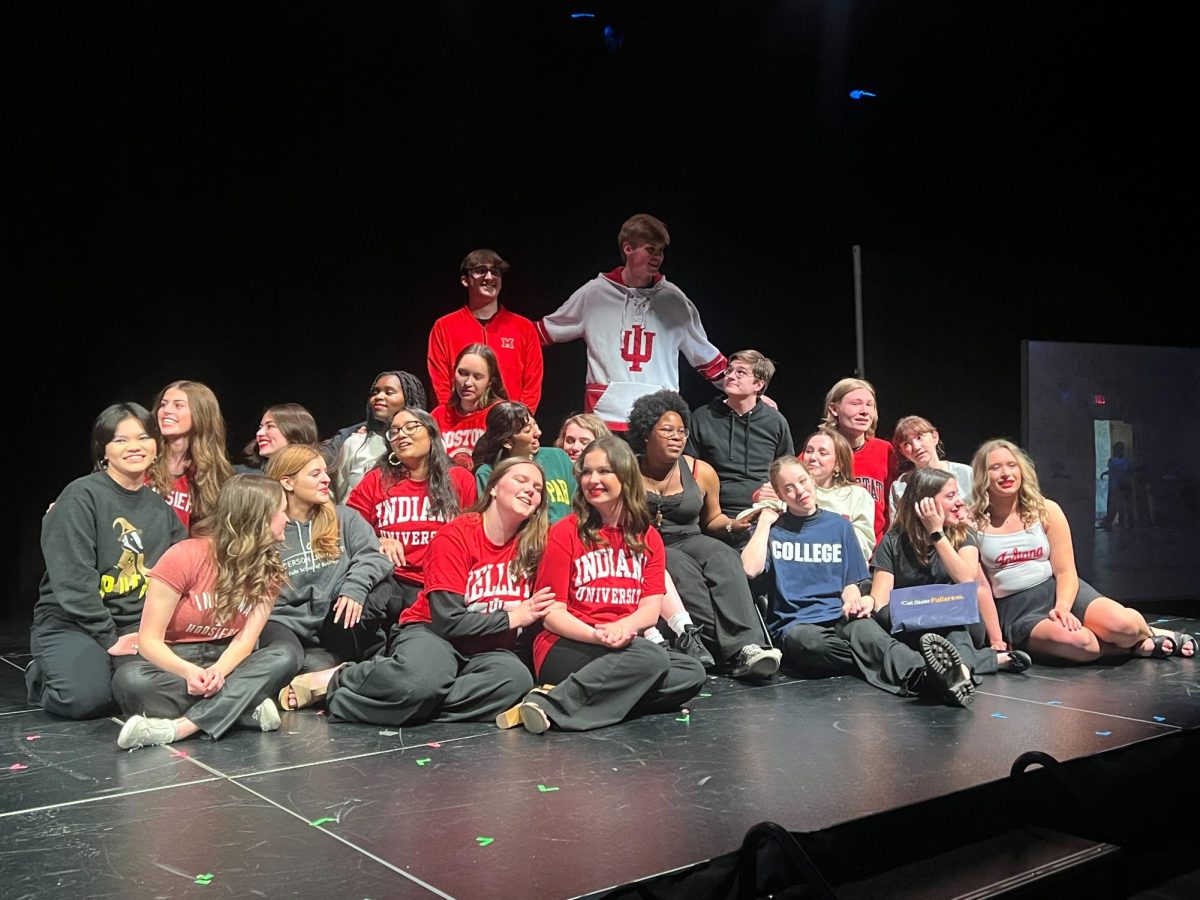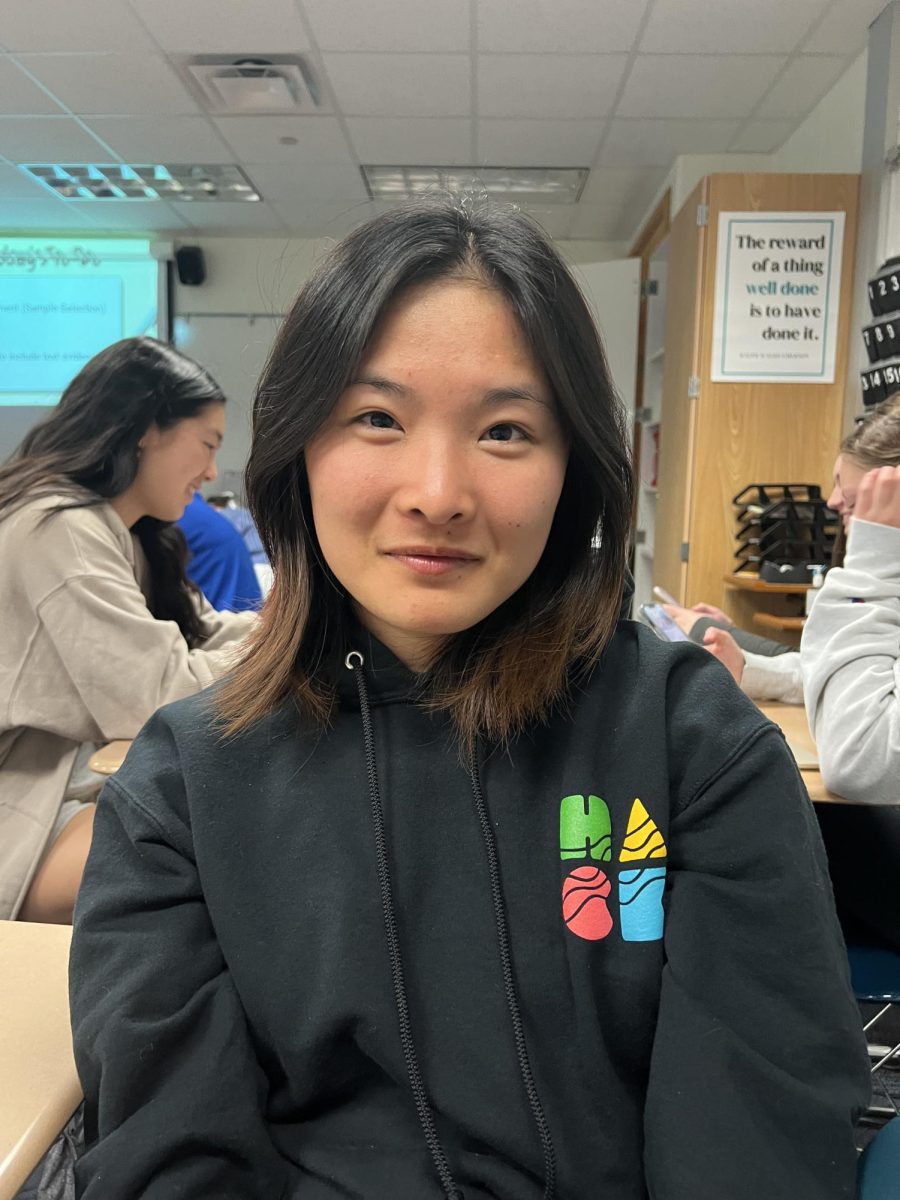By Emma Neukam
[email protected]
She was practicing backbends with two of her fellow color guard members in March of her sophomore year when senior Elizabeth van Hoose went down, hitting the back of her neck as she fell.
Little did van Hoose know the severe pain and discomfort she suffered from after she fell were due to a Class C sprain in her back. “No matter what position I was in, it hurt,” van Hoose said.
According to Mortality and Morbidity Weekly Report, an estimated two million injuries occurred in high school athletics and activities in the 2005-2006 school year. These injuries often have serious long-term consequences forces many students like van Hoose to realign their priorities or continue participating in spite of their injuries.
Victoria Weinkauf, a junior on the school’s club and swim teams, said she experiences constant back pain started at the end of her freshman year. “It’s just gradually started getting worse until we decided to go the doctor,” Weinkauf said.
After many visits to doctors to find out the cause of her sudden back pain, Weinkauf said they have finally come to the conclusion that the facet joints on the side of her spine are inflamed.
“My back pain, it’s always there, but it definitely intensifies with swimming,” Weinkauf said.
Dawn Robertson, assistant trainer at this school, works to repair injuries of students like van Hoose and Weinkauf, as well as prevent them from happening in the first place.
When students must make a decision to play through their pain or give up their activities, Robertson said they should follow the advice of their physicians and trainers.
“My advice would be if it’s an injury that’s going to cause problems later in life, then you definitely tell the athletes the consequences and direct them into a different (activity),” she said.
Despite her pain, Weinkauf continues to swim about 25 hours per week, although many of her doctors have discouraged it with her back’s condition. However, she said giving up is not an option for her, and she chooses to swim through her injury.
If athletes defy trainers’ recommendations, Robertson said she would tell them they were putting themselves at risk for elevating the severity of their injuries and possibly risking further damage.
But for Weinkauf, she said she refuses to stop swimming. “It’s been in my life for such a long time, it would be weird to completely quit. Since I’ve grown to love the sport so much, I can’t really imagine not swimming during high school,” Weinkauf said.
Unlike Weinkauf, van Hoose decided that her best option would be to quit the color guard, after thinking that she fell behind the rest of the guard team as well as her doctor’s recommendation to refrain from participating.
“I knew that I was going to be behind, and I just decided that it wouldn’t be beneficial to the color guard if one member couldn’t do everything the guard was supposed to do,” van Hoose said.
For students like Weinkauf who play through their injuries, Robertson’s help is both beneficial and necessary. Robertson said if left untreated, injuries that occur during the teen years could lead to other more serious injuries as students get older, one example being unhealed stress fractures. Robertson said, “If a student athlete doesn’t treat a stress fracture with rest, it becomes a non-union fracture that will require surgery.”
Weinkauf, who sees Robertson before every afternoon swim practice for a heating pad or ice pack for her back, said students who become injured should get help from trainers like Robertson but they should also learn to persevere. “You have to know the difference between good pain and bad pain,” she said. “It’s beneficial for me to know that I can push myself farther than I think I can.”
Van Hoose said making a pros and cons list is helpful when students are faced with injuries that force them to decide between giving up activities and playing through their pain. “When you do that, you realize that the pros aren’t worth the cons of going through the pain. Take the time to make it better because it’s worth it in the end,” she said.
Weinkauf, however, continues to swim even with the inflammation of the joints in her back. “My injury’s definitely let me see my pain tolerance level; it’s a challenge I’ve been trying to overcome for a couple years.”
In van Hoose’s opinion, having to choose between sticking with a sport or giving it up after being faced with an injury is a tough decision for many students to make. She said, “It makes them think really hard about what they want to do in the future.”



















































![Review: “Suits” is a perfect blend of legal drama and humor [MUSE]](https://hilite.org/wp-content/uploads/2024/04/unnamed-1.png)
![Chelsea Meng on her Instagram-run bracelet shop [Biz Buzz]](https://hilite.org/wp-content/uploads/2024/04/IMG_2446-1200x838.jpg)
![Review: Quiet on Set: The Dark Side of Kids TV is the long awaited exposé of pedophilia within the children’s entertainment industry [MUSE]](https://hilite.org/wp-content/uploads/2024/04/unnamed.jpg)
![Review: “The Iron Claw” cannot get enough praise [MUSE]](https://hilite.org/wp-content/uploads/2024/04/unnamed.png)
![Review: “The Bear” sets an unbelievably high bar for future comedy shows [MUSE]](https://hilite.org/wp-content/uploads/2024/03/unnamed.png)
![Review in Print: Maripaz Villar brings a delightfully unique style to the world of WEBTOON [MUSE]](https://hilite.org/wp-content/uploads/2023/12/maripazcover-1200x960.jpg)
![Review: “The Sword of Kaigen” is a masterpiece [MUSE]](https://hilite.org/wp-content/uploads/2023/11/Screenshot-2023-11-26-201051.png)
![Review: Gateron Oil Kings, great linear switches, okay price [MUSE]](https://hilite.org/wp-content/uploads/2023/11/Screenshot-2023-11-26-200553.png)
![Review: “A Haunting in Venice” is a significant improvement from other Agatha Christie adaptations [MUSE]](https://hilite.org/wp-content/uploads/2023/11/e7ee2938a6d422669771bce6d8088521.jpg)
![Review: A Thanksgiving story from elementary school, still just as interesting [MUSE]](https://hilite.org/wp-content/uploads/2023/11/Screenshot-2023-11-26-195514-987x1200.png)
![Review: When I Fly Towards You, cute, uplifting youth drama [MUSE]](https://hilite.org/wp-content/uploads/2023/09/When-I-Fly-Towards-You-Chinese-drama.png)
![Postcards from Muse: Hawaii Travel Diary [MUSE]](https://hilite.org/wp-content/uploads/2023/09/My-project-1-1200x1200.jpg)
![Review: Ladybug & Cat Noir: The Movie, departure from original show [MUSE]](https://hilite.org/wp-content/uploads/2023/09/Ladybug__Cat_Noir_-_The_Movie_poster.jpg)
![Review in Print: Hidden Love is the cute, uplifting drama everyone needs [MUSE]](https://hilite.org/wp-content/uploads/2023/09/hiddenlovecover-e1693597208225-1030x1200.png)
![Review in Print: Heartstopper is the heartwarming queer romance we all need [MUSE]](https://hilite.org/wp-content/uploads/2023/08/museheartstoppercover-1200x654.png)
























![Review: Ladybug & Cat Noir: The Movie, departure from original show [MUSE]](https://hilite.org/wp-content/uploads/2023/09/Ladybug__Cat_Noir_-_The_Movie_poster-221x300.jpg)

![Review: Next in Fashion season two survives changes, becomes a valuable pop culture artifact [MUSE]](https://hilite.org/wp-content/uploads/2023/03/Screen-Shot-2023-03-09-at-11.05.05-AM-300x214.png)
![Review: Is The Stormlight Archive worth it? [MUSE]](https://hilite.org/wp-content/uploads/2023/10/unnamed-1-184x300.png)



Andrew Wright • Sep 18, 2009 at 1:41 pm
That was extremely well written Emma:) Your an extremely talented writer, i know i have to read Fishers news stuff alot being in the newsroom. Your amazing thanx:)